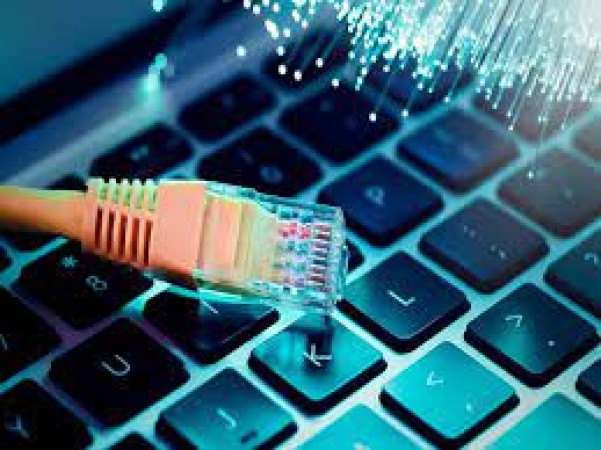
In the ever-evolving landscape of internet connectivity, the decision to opt for either Fiber Optic or Wireless Broadband can be a challenging one. Both technologies boast unique characteristics that cater to a diverse array of user needs. In this comprehensive exploration, we'll delve into the intricacies of Fiber Optic and Wireless Broadband, unraveling the disparities that set them apart.
Fiber Optic internet operates on the principle of transmitting data through thin strands of glass or plastic, utilizing pulses of light. Its prominence has surged due to its exceptional speed and reliability, setting it apart from traditional broadband alternatives.
The standout feature of Fiber Optic technology lies in its remarkable speed. Fiber Optic connections offer ultra-fast internet, surpassing the capabilities of traditional broadband alternatives. The transmission of data through light pulses ensures swift and efficient communication.
Low latency is a key advantage of Fiber Optic internet. The reduced delay in data transmission results in minimal lag, contributing to an enhanced user experience, especially in applications requiring real-time interaction, such as online gaming or video conferencing.
Fiber Optic cables exhibit immunity to electromagnetic interference, a notable contrast to copper-based connections. This characteristic ensures a stable and interference-free connection, contributing to the overall reliability of Fiber Optic technology.
One of the significant advantages of Fiber Optic internet is its high bandwidth capacity. The ability to accommodate multiple devices simultaneously without compromising speed makes it an ideal choice for households or businesses with extensive connectivity needs.
Fiber Optic technology is synonymous with scalability, making it a future-proof choice. As data demands continue to escalate, Fiber Optic infrastructure can seamlessly adapt to increasing requirements, ensuring longevity and relevance in the rapidly evolving technological landscape.
In contrast, Wireless Broadband relies on radio signals for data transmission, offering a different set of advantages and challenges. The appeal of Wireless Broadband lies in its flexibility and convenience.
Wireless Broadband liberates users from the constraints of physical cables, providing the freedom of mobility. This makes it an attractive option for individuals with on-the-go lifestyles, as it allows for internet connectivity without the need for fixed installations.
Installation of Wireless Broadband is quick and hassle-free compared to the time-consuming process of laying Fiber Optic cables. This makes it a convenient choice for those seeking immediate connectivity without the need for extensive infrastructure development.
Wireless Broadband excels in providing coverage over vast areas. This characteristic makes it particularly suitable for remote locations where the installation of physical cables might be impractical or cost-prohibitive.
One notable limitation of Wireless Broadband is its susceptibility to signal interference. Electronic devices and physical obstructions can disrupt wireless signals, leading to potential connectivity issues. This makes it imperative for users to consider their local environment when opting for Wireless Broadband.
In densely populated areas, users of Wireless Broadband may experience reduced speeds due to shared bandwidth. The nature of wireless signals necessitates sharing frequencies, which can impact the overall performance during peak usage times.
To make an informed decision between Fiber Optic and Wireless Broadband, it's essential to evaluate your specific internet usage needs. If high-speed, reliable connectivity for data-intensive tasks is a priority, Fiber Optic may be the preferable choice.
The availability of both Fiber Optic and Wireless Broadband varies by location. Before making a decision, it's crucial to check the accessibility of each technology in your area. Limited availability might influence your choice, especially in regions where one technology is more prevalent than the other.
Budget considerations play a significant role in the decision-making process. While Fiber Optic technology is known for its superior performance, it may involve higher installation costs. On the other hand, Wireless Broadband offers a more budget-friendly option, making it accessible to a broader range of users.
After careful consideration of the nuances surrounding Fiber Optic and Wireless Broadband, the ultimate choice hinges on individual preferences and specific requirements.
If speed and reliability are paramount, Fiber Optic emerges as the preferred choice. The unparalleled speed of Fiber Optic internet ensures seamless online experiences, making it an ideal option for users with demanding connectivity needs.
Wireless Broadband, with its flexibility and quick installation, is an optimal choice for those who prioritize mobility and immediate connectivity. It caters to individuals who value the convenience of internet access without the constraints of physical cables.
The landscape of Fiber Optic technology continues to evolve, promising even faster speeds and improved efficiency. Ongoing research and development in this field aim to elevate the capabilities of Fiber Optic internet, ensuring it remains at the forefront of high-speed connectivity solutions.
The imminent arrival of 5G technology marks a significant milestone in the realm of Wireless Broadband. This next-generation technology is poised to revolutionize wireless connectivity, offering unprecedented speeds and reliability. The advent of 5G holds the potential to address some of the current limitations associated with Wireless Broadband. In conclusion, the choice between Fiber Optic and Wireless Broadband is not a one-size-fits-all decision. Individual needs, location, and budget considerations play pivotal roles in determining the most suitable option. Both technologies have their merits, and staying informed is paramount to making a decision that aligns with your specific requirements.
Nirmala Sitharaman and Roshni Nadar Make Forbes' World’s Most Powerful Women 2023 List